Publication
Article
Oncology Live®
Lung Cancer Pioneer Paves Path for Future Innovation
Author(s):
The achievements of Roman Perez-Soler, MD, include studies of anti-EGFR therapies and topoisomerase inhibitors, extensive research on liposomal delivery systems, and early work on patient-derived xenografts in mice.
Haiying Cheng, MD, PhD

When Haiying Cheng, MD, PhD, was testing a plastic tent for the first-inhuman trial of inhaled azacitidine to treat patients with advanced non–small cell lung cancer (NSCLC), she had an unusual subject zero: Roman Perez-Soler, MD, the highly accomplished thoracic oncologist who is her division chief at Montefiore Einstein Cancer Center as well as the deputy director of the Albert Einstein Cancer Center in Bronx, New York.1
“Dr Perez-Soler was like, ‘No, no, let me try this,’ ” Cheng recalled with a laugh. He gowned up, ducked under the tent, and put a nebulizer between his lips. “He tried everything himself to make sure the setup was safe for the patients and was doing what it was supposed to do.”
She noted that Perez-Soler had championed the unconventional study from the start, overcoming organizational hurdles and securing funding. “In the beginning, everyone thought it was a little bit crazy,” she said. “Without Dr Perez-Soler, I don’t think we could have done the clinical trial.”
Findings from the study (NCT02009436), published earlier this year in Lung Cancer, are among the many hallmarks of PerezSoler’s long and productive career. For this study in particular, he zeroed in on an experimental and little-known therapy, circumvented doubters, navigated bureaucratic challenges, supported his junior colleagues, and helped produce intriguing results. Specifically, disease control in 3 of 8 patients and a decrease in global DNA methylation in the bronchial epithelium of 2 out of 3 patients who underwent bronchoscopy.1
In an interview with OncologyLive®, Perez-Soler said he envisions that inhaled agents such as azacitidine (Vidaza), currently available as an injectable therapy for patients with certain myelodysplastic syndrome subtypes,2 may be used some day to reverse lung damage in smokers before they are diagnosed with cancer. He described the trial as the first step in a years-long project to develop such a treatment, but if it eventually succeeds, it will be the latest of several seminal contributions he has made to the field. These achievements include studies of anti-EGFR therapies and topoisomerase inhibitors, extensive research on liposomal delivery systems, and early work on patient-derived xenografts in mice.
“He’s been involved in a lot of really interesting, pioneering efforts both translationally and in clinical research. But more importantly, he’s been a real leader [and] a real adviser and guide for so many thoracic oncologists across the country and the world. I do view him as one of the giants of the field and definitely look at him as a role model,” said Balazs Halmos, MD, MS, associate director of clinical science at Albert Einstein Cancer Center, director of the Multidisciplinary Thoracic Oncology Program at Montefiore, and professor of medicine at Albert Einstein College of Medicine.
Balazs Halmos, MD, MS
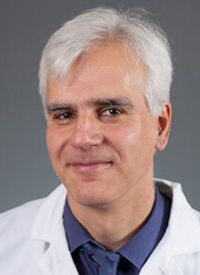
Perez-Soler has 17 patents, founded 2 biotechnology companies, and served on many National Cancer Institute committees, including the Board of Scientific Counselors for Clinical Research and Epidemiology. He also created and cochairs the Annual New York Lung Cancers Symposium®, which provides an environment for a wide range of practitioners to feel comfortable asking questions and sharing their clinical experiences, said meeting cochair Mark G. Kris, MD, the William and Joy Ruane Chair in Thoracic Oncology at Memorial Sloan Kettering Cancer Center in New York, New York.
Mark G. Kris, MD
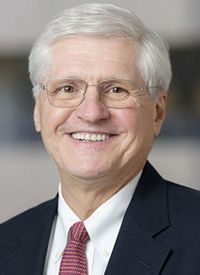
Kris noted that Perez-Soler worked in various roles at The University of Texas MD Anderson Cancer Center in Houston and at New York University before joining Montefiore and Einstein, where he is chairman of the Department of Oncology, chief of the Division of Medical Oncology, and professor of medicine and molecular pharmacology.
“He has worked very hard to bring together the physicians, nurse practitioners, physicians assistants, nurses, trainees, and others caring for people with lung cancer in the tristate area,” Kris said of the symposium. “His expertise at major institutions, his work in the laboratory, his work in the clinic, his work as an educator—he brings all that to the meeting that he has run for 15 years.”
Hitting Challenging Targets
Perez-Soler and Kris will cochair the 16th Annual New York Lung Cancers Symposium® on November 6. The conference, hosted by Physicians’ Education Resource®, LLC (PER®), will be held as a hybrid interactive conference. It will include case presentations and reviews of treatment options for NSCLC, small cell lung cancer (SCLC), and mesothelioma. Presenters will discuss strategies for stopping immunotherapy, management of immunerelated adverse events (AEs), practices’ technology needs, and approaches to treating patients with KRAS mutations, EGFR exon 20 mutations, and EGFR-positive NSCLC, among other topics.
Perez-Soler said he expects symposium attendees will be particularly interested in discussing the recent approval of sotorasib (Lumakras), the first treatment targeting KRAS G12C–mutated NSCLC.3 The RAS GTPase inhibitor demonstrated a median overall survival of 12.5 months among 124 evaluable patients (95% CI, 10.0–not evaluable [NE]), according to updated results from the phase 2 CodeBreaK 100 trial (NCT03600883) presented at the 2021 American Society of Clinical Oncology Annual Meeting and simultaneously published in the New England Journal of Medicine4,5 (TABLE 13-5). The trial enrolled patients with locally advanced or metastatic KRAS G12C–mutated NSCLC that had progressed after receiving immune checkpoint inhibitors and/or platinum-based chemotherapy.
TABLE 1. NEW DRUG SNAPSHOT: KRAS-mutant NSCLC Approval

An objective response was observed in 46 patients (37.1%; 95% CI, 28.6%-46.2%), including in 4 (3.2%) who had a complete response (CR) and 42 (33.9%) who had a partial response (PR). The median duration of response (DOR) was 11.1 months (95% CI, 6.9-NE). Disease control occurred in 100 patients (80.6%; 95% CI, 72.6%-87.2%). The median progression-free survival (PFS) was 6.8 months (95% CI, 5.1-8.2). Treatmentrelated AEs (TRAEs) occurred in 88 of 126 patients (69.8%), including grade 3 events in 25 patients (19.8%) and 2 grade 4 events, dyspnea and pneumonitis, for 1 patient each (0.8%). Responses were observed in subgroups defined according to PD-L1 expression, tumor mutational burden, and co-occurring mutations in STK11, KEAP1, or TP53.5
“KRAS is driving the interest and the excitement,” Perez-Soler said. “It was very frustrating that we were able to develop compounds that could block a number of targets, but this one was a very elusive target. It was very hard to find something that would block that mutated protein. Finally, now we have compounds that are very active, or at least significantly active, against patients that have this mutation. It’s the most exciting thing I have seen lately.”
Kris said another new drug for a previously untargetable mutation will also be a hot topic at the symposium. Amivantamab-vmjw (Rybrevant), a bispecific antibody directed against EGF and MET receptors, was approved in May for adult patients with locally advanced or metastatic NSCLC with EGFR exon 20 insertion mutations, as detected by an FDA-approved test, who have progressed on or after platinum-based chemotherapy (TABLE 26). Guardant360 CDx was approved as a companion diagnostic for the drug.6
TABLE 2. NEW DRUG SNAPSHOT: EGFR-mutant NSCLC Approval
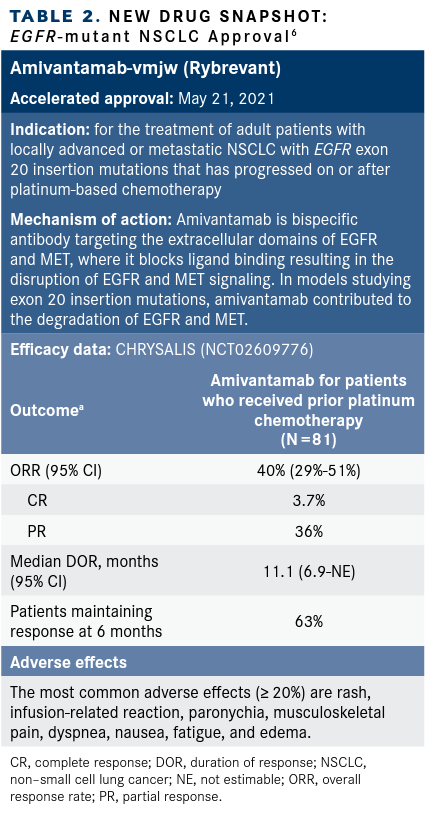
In the phase 1 multicohort CHRYSALIS trial (NCT02609776) among 81 patients the overallresponse rate (ORR) was 40% (95% CI, 29%-51%), including a CR rate of 3.7% and a PR rate of 36%.7 The median DOR was 11.1 months (95% CI, 6.9-NE), and 63% of patients had a response lasting 6 months or longer. All-grade AEs occurring in 10% or more of patients in the safety population (n = 129) included rash (84%), infusion- related reactions (64%), and paronychia (50%). Grade 3 or 4 AEs included rash (3.9%) and infusion-related reactions, paronychia, and diarrhea, each at 3.1%.
Kris noted that several other agents are being tested in patients with exon 20 mutations. Thirty active studies of potential therapies are listed on ClinicalTrials.gov.
Expanding Immunotherapy
For Perez-Soler, some of the major outstanding questions in lung cancer research concern the limits of immunotherapies and avenues for expanding their benefits. Although the population of patients eligible for treatment with immune checkpoint inhibitors has soared over the past decade, the current response rate does not exceed 15% for most cancer subtypes.8
Roman Perez-Soler, MD
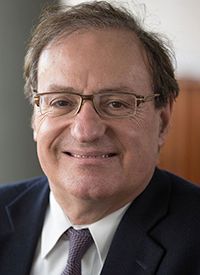
“We must try to find better biomarkers to predict the people who are going to respond the best to these drugs. PD-L1 [expression] has been useful, but it’s not perfect. There must be more factors that determine whether you’re going to respond,” he said.
Tumor mutational burden (TMB) has proven useful for predicting response to checkpoint inhibitors in some cancer types, and last year the FDA approved a new indication for pembrolizumab (Keytruda) for patients with advanced and refractory cancers with high TMB as indicated by a defined threshold level of mutations determined by an approved test (≥ 10 mut/Mb). However, studies have found that although TMB status can predict response in lung, melanoma, bladder, and some other cancers, it is not associated with improved outcomes in common malignancies such as breast, prostate, and brain tumors.9
Several other potential predictors of response to immunotherapy have been identified, including the degree of mismatch repair deficiency and microsatellite instability, altered interferon-γ signaling, the extent/density of tumor-infiltrating immune cells, epigenetic modifications, intestinal microbiota, and peripheral blood biomarkers such as lactate dehydrogenase and angiopoietin-2. None of these have been confirmed to broadly predict response, although a recent review of biomarkers published in the British Journal of Cancer from Pilard et al8 suggests that successively measuring several of them over time could create a picture of a tumor and its microenvironment that would illuminate response to immunotherapy.
Perez-Soler said if he were a young lung cancer researcher starting out his career today that he might join those investigating the biology of immunotherapy resistance. “These tumors must have other mechanisms of defending themselves against these attacks. If you find the mechanisms, you can neutralize those. I’m pretty sure that it’s going to be less complicated than it looks when we find it,” he said.
Mechanisms of resistance to immunotherapy have been extensively researched and catalogued, with investigators finding they involve multiple aspects of biology such as genes, metabolism, inflammation, and abnormal neovascularization.10 Studies aimed at overcoming resistance are using numerous agents that target novel pathways.
For example, in January, the FDA granted breakthrough therapy designation to the anti-TIGIT immunotherapy tiragolumab in combination with atezolizumab (Tecentriq) for first-line treatment of patients with metastatic NSCLC whose tumors have high PD-L1 expression with no EGFR or ALK alterations.11 The designation was based on findings from the phase 2 CITYSCAPE trial (NCT03563716), in which 135 patients were randomized to receive atezolizumab plus placebo (n = 68) or atezolizumab pllus tiragolumab (n = 67).12
At a median follow-up of 10.9 months, improvement in ORR and median PFS was maintained in the intention-to-treat population (ORR, 37.3% [95% CI, 25.0%-49.6%]; PFS, 5.6 months [95% CI, 4.2-10.4]) vs those who received placebo (ORR, 20.6% [95% CI, 10.2%-30.9%]; PFS, 3.9 months [95% CI, 2.7-4.5]). In an earlier safety analysis, TRAEs occurred in 80.6% and 72.0% of patients, respectively. Incidence of grade 3 or higher TRAEs was higher in those treated with placebo (19.1%) vs tiragolumab (14.9%). AEs leading to treatment withdrawal occurred in 10.3% for those who received atezolizumab plus placebo and 7.5% for those who received tiragolumab plus atezolizumab.12
Other therapies being investigated as strategies for overcoming resistance, as monotherapies or in combination with immunotherapy, include antiangiogenic drugs in nonsquamous NSCLC; radiotherapy as consolidation therapy in patients with stage III unresectable NSCLC; PARP inhibitors in multiple subsets of patients with NSCLC; STING antagonists in advanced solid tumors or lymphomas; and IDO inhibitors, arginase inhibitors, epigenetic modulators, anti-CD73 antibodies targeting the adenosine A2A receptor, CCR4 and CXCR2 inhibitors, and several others.
Pioneering Studies
The rewards from illuminating previously unknown mechanisms of cancer biology have motivated Perez-Soler throughout his career, prompting him to switch from internal medicine to oncology after he finished medical school in his native Spain in the early 1980s.
“I realized that the tools to study cancer were being developed and becoming a reality. What attracted me was not what we knew then of cancer, but the lot we would learn in the next 30 years. I identified, and I guess I was right, that oncology was going to be one of the areas in which there would be tremendous progress,” he said. “I’m more of an adventurer. I like to take risks. I saw that this is tough disease, people die of this, and we know nothing. Then let’s jump on the unknown.”
At MD Anderson he spent several years working on liposomal delivery systems, which offered a potential new alternative to anatomical targeting of tumors. Liposomes promised to boost drug efficacy without increasing toxicity, but in the 1970s and 1980s, investigators struggled to make the technology work.13 In collaboration with chemists who provided him with platinum drugs, adriamycin analogs, early attempts at antibody-drug conjugates, and other agents, Perez-Soler packaged the substances in liposomes and tested them on tumors in mice in dozens of studies.
Among other products, he developed L-NDDP (Aroplatin), the first liposomal platinum formulation to enter into clinical trials, and he led a phase 1 study that identified its maximum tolerable dose and found no liposome-related AEs.14 PerezSoler was awarded several patents related to liposomes and helped pave the way for numerous therapies that were approved beginning in the mid-1990s.
He also conducted early studies with EGFR inhibitors that led to a 1994 study of the monoclonal antibody RG 83852 in patients with NSCLC and head-and-neck cancer that found no toxic effects at doses that resulted in high tumor EGFR saturation.15 His most cited article is a phase 2 trial of erlotinib (Tarceva) in patients with HER1/EGFR–expressing NSCLC previously treated with platinum-based chemotherapy.16 Published in 2004, the study indicated erlotinib was an active and well-tolerated agent for treatment of relapsing NSCLC and supported continuing development of the drug, which was approved later that year.
Among the many other agents that he has studied are topoisomerase inhibitors. He served as principal investigator for trials of topotecan in both NSCLC and SCLC. The study of patients with SCLC refractory to the topoisomerase II poison etoposide showed that topotecan, a topoisomerase I poison, had modest antitumor activity, indicating that clinical resistance to the former did not confer cross-sensitivity to the latter.17 Topotecan subsequently became the only approved second-line therapy for SCLC until lurbinectedin (Zepzelca) was approved last year.18
Perez-Soler said he was also proud of a 2000 paper he described as one of the first reports on patient-derived xenografts (PDXs) in mice.19 The study found that NSCLC tumors implanted in mice had an overall take rate of 46% (95% CI, 36%-56%), were morphologically very similar to the original tumors, and had a response rate to paclitaxel of 21% (95% CI, 9%-38%), which was equivalent to the response in human patients with advanced NSCLC.
“We demonstrated, I think for the first time, that this actually is a clinically relevant model, in the mouse, of human tumors. If that tumor in the mouse—which is your tumor—responds to the drug, your tumor will respond when they give you the drug,” he said. “And then 10 or 15 years after that, the whole thing exploded, and PDXs are now the new standard for in vivo tumor model.”
In recent years, Perez-Soler has remained involved in a broad spectrum of thoracic cancer research while also continuing his professional, administrative, and mentoring work. His projects include leadership of the Paul Calabresi Career Development Award for Clinical Oncology, a National Cancer Institute grant that has allowed approximately 25 young investigators at Einstein to dedicate the bulk of their time to research. He also plans on supporting his colleagues’ work, such as Halmos’ studies of MET mutations and Cheng’s inhaled azacitidine trial as well as her study of RICTOR, a component of the mTOR complex 2 (mTORC2) that is amplified in 8% to 13% of lung cancers.20
Cheng discovered RICTOR amplification in an 18-year-old never-smoker with lung adenocarcinoma, treated the patient with mTORC1/2 inhibitors, and together with her fellow investigators analyzed the protein and its oncogenic effects. They found that in 11% of lung cancers, RICTOR occurs as the sole potentially actionable gene target and launched a drug-screening effort to identify specific RICTOR inhibitors.
“It’s the youngest patient I’ve ever seen with lung cancer,” said Perez-Soler, who is the study’s corresponding author. “Is RICTOR going to be important? We don’t know. It could be important. It might lead to some treatments that would target that. It’s intriguing. It’s novel. The work needs to be done.”
References
- Cheng H, Zou Y, Shah CD, et al. First-in-human study of inhaled azacitidine in patients with advanced non-small cell lung cancer. Lung Cancer. 2021;154:99-104. doi:10.1016/j.lungcan.2021.02.015
- Vidaza. Prescribing information. Celgene Corporation; 2020. Accessed August 11, 2021. https://www.accessdata.fda.gov/drugsatfda_docs/label/2020/050794s032lbl.pdf
- FDA grants accelerated approval to sotorasib for KRAS G12C mutated NSCLC. FDA. Updated May 28, 2021. Accessed August 11, 2021. https://www.fda.gov/drugs/resources-information-approved-drugs/fda-grants-accelerated-approval-sotorasib-kras-g12c-mutated-nsclc
- Skoulidis F, Li BT, Govindan R, et al. Overall survival and exploratory subgroup analyses from the phase 2 CodeBreaK 100 trial evaluating sotorasib in pretreated KRAS p.G12C mutated non-small cell lung cancer. J Clin Oncol. 2021;39(suppl 15):9003. doi:10.1200/JCO.2021.39.15_suppl.9003
- Skoulidis F, Li BT, Dy GK, et al. Sotorasib for lung cancers with KRAS p.G12C mutation. N Engl J Med. 2021;384(25):2371-2381. doi:10.1056/NEJMoa2103695
- FDA grants accelerated approval to amivantamab-vmjw for metastatic non-small cell lung cancer. FDA. Updated May 21, 2021. Accessed August 11, 2021. https://www.fda.gov/drugs/resources-information-approved-drugs/fda-grants-accelerated-approval-amivantamab-vmjw-metastatic-non-small-cell-lung-cancer
- Rybrevant. Prescribing information. Janssen Biotech Inc; 2021. Accessed August 3, 2021.https://www.accessdata.fda.gov/drugsatfda_docs/label/2021/761210s000lbl.pdf
- Pilard C, Ancion M, Delvenne P, Jerusalem G, Hubert P, Herfs M. Cancer immunotherapy: it’s time to better predict patients’ response. Br J Cancer. Published online June 10, 2021. doi:10.1038/s41416-021-01413-x
- McGrail DJ, Pilié PG, Rashid NU, et al. High tumor mutation burden fails to predict immune checkpoint blockade response across all cancer types. Ann Oncol. 2021;32(5):661-672. doi:10.1016/j.annonc.2021.02.006
- Bai R, Chen N, Li L, et al. Mechanisms of cancer resistance to immunotherapy. Front Oncol.2020;10:1290. doi:10.3389/fonc.2020.01290
- Roche’s novel anti-TIGIT tiragolumab granted FDA breakthrough therapy designation in combination with Tecentriq for PD-L1-high non-small cell lung cancer. News release. Roche. January 5, 2021. Accessed August 11, 2021. https://www.roche.com/media/releases/med-cor-2021-01-05.htm
- Rodriguez-Abreu D, Johnson ML, Hussein MA, et al. Primary analysis of a randomized, double-blind, phase II study of the anti-TIGIT antibody tiragolumab (tira) plus atezolizumab (atezo) versus placebo plus atezo as first-line (1L) treatment in patients with PD-L1-selected NSCLC (CITYSCAPE). J Clin Oncol. 2020;38(suppl 15):9503. doi:10.1200/JCO.2020.38.15_suppl.9503
- Poste G, Bucana C, Raz A, Bugelski P, Kirsh R, Fidler IJ. Analysis of the fate of systemically administered liposomes and implications for their use in drug delivery. Cancer Res. 1982;42(4):1412-1422.
- Perez-Soler R, Lopez-Berestein G, Lautersztain J, et al. Phase I clinical and pharmacological study of liposome-entrapped cis-bis-neodecanoato-trans-R,R-1,2-diaminocyclohexane platinum(II). Cancer Res. 1990;50(14):4254-4259.
- Perez-Soler R, Donato NJ, Shin DM, et al. Tumor epidermal growth factor receptor studies in patients with non-small-cell lung cancer or head and neck cancer treated with monoclonal antibody RG 83852. J Clin Oncol. 1994;12(4):730-739. doi:10.1200/JCO.1994.12.4.730
- Perez-Soler R, Chachoua A, Hammond LA, et al. Determinants of tumor response and survival with erlotinib in patients with non-small-cell lung cancer. J Clin Oncol. 2004;22(16):3238-3247. doi:10.1200/JCO.2004.11.057
- Perez-Soler R, Glisson BS, Lee JS, et al. Treatment of patients with small-cell lung cancer refractory to etoposide with the topoisomerase I poison topotecan. J Clin Oncol. 1996;14(10):2785-2790. doi:10.1200/JCO.1996.14.10.2785
- FDA grants accelerated approval to lurbinectedin for metastatic small cell lung cancer. FDA. Updated June 16, 2021. Accessed August 11, 2021. https://www.fda.gov/drugs/drug-approvals-and-databases/fda-grants-accelerated-approval-lurbinectedin-metastatic-small-cell-lung-cancer
- Perez-Soler R, Kemp B, Wu QP, et al. Response and determinants of sensitivity to paclitaxel in human non-small cell lung cancer tumors heterotransplanted in nude mice. Clin Cancer Res.2000;6(12):4932-4938.
- Cheng H, Zou Y, Ross JS, et al. RICTOR amplification defines a novel subset of patients with lung cancer who may benefit from treatment with mTORC1/2 inhibitors. Cancer Discov. 2015;5(12):1262-1270. doi:10.1158/2159-8290.CD-14-0971
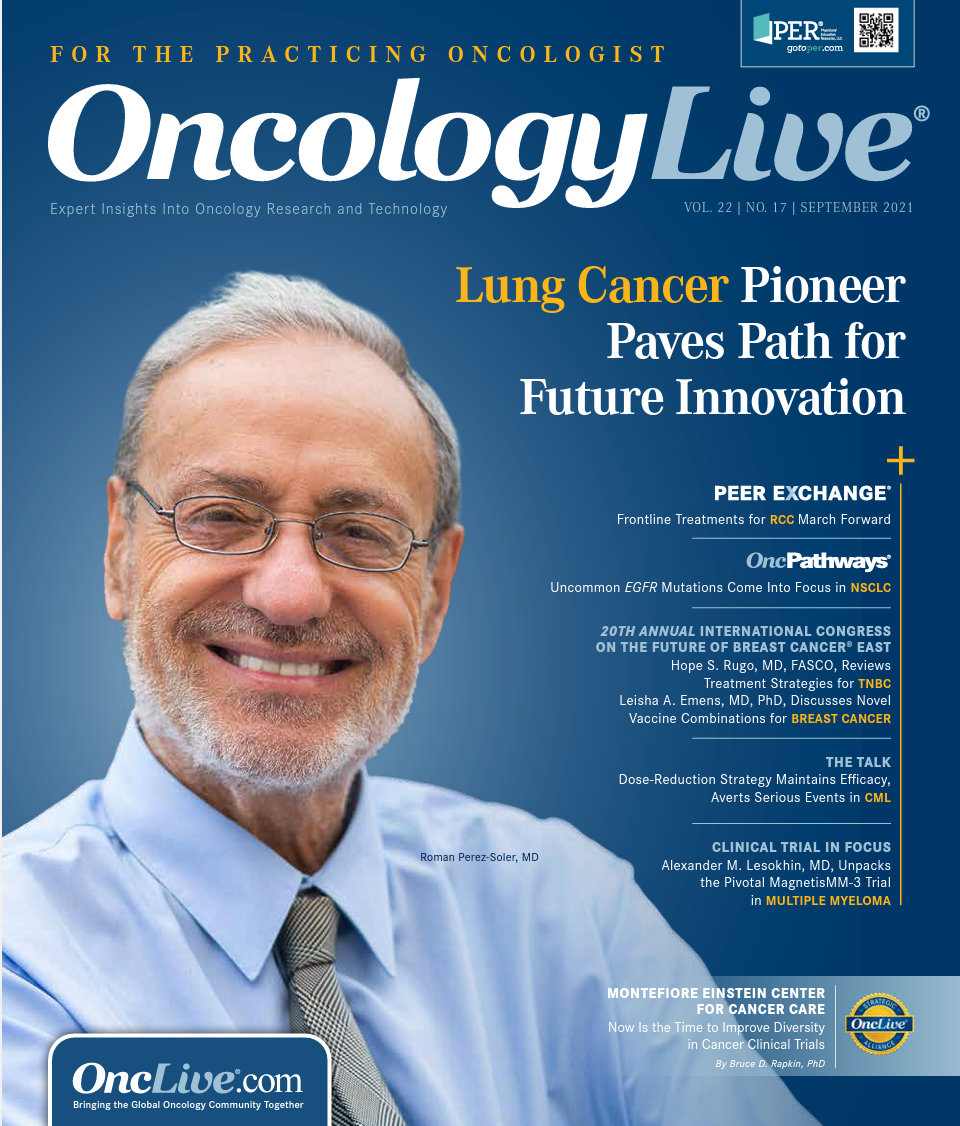

























%20(2)%201-Recovered-Recovered-Recovered-Recovered-Recovered-Recovered-Recovered-Recovered-Recovered-Recovered-Recovered-Recovered-Recovered-Recovered-Recovered-Recovered-Recovered.jpg?fit=crop&auto=format)
%20(2)%201-Recovered-Recovered-Recovered-Recovered-Recovered-Recovered-Recovered-Recovered-Recovered-Recovered-Recovered-Recovered-Recovered-Recovered-Recovered-Recovered-Recovered.jpg?fit=crop&auto=format)
